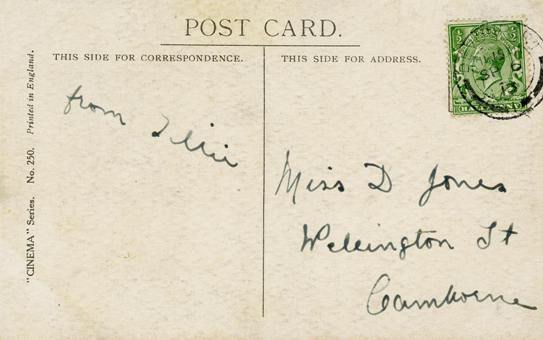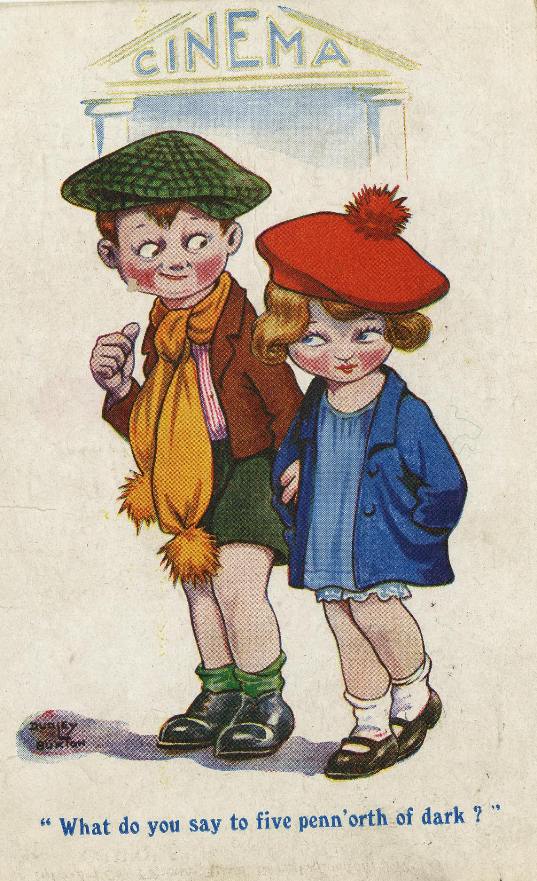Source: William Nicholson, ‘Narrative and Explanation of the Appearance of Phantoms and other Figures in the Exhibition of the Phantasmagoria. With Remarks on the Philosophical use of common Occurrences’, Journal of Natural Philosophy, February 1802, pp. 147-150
Text: A very striking application of the magic lanthorn has been made this winter to the public amusement by M. Philipsthal at the Lyceum. The novelty consists in placing the lanthorn on the opposite side of the screen which receives the images, instead of on the same side as the spectator, and suffering no light to appear but what passes through, and tends to form those images. His sliders are therefore perfectly opake, except that portion upon which the transparent figures are drawn, and the exhibition is thus conducted.
All the lights of the small theatre of exhibition were removed, except one hanging lamp, which could be drawn up so that its flame should be perfectly enveloped in a cylindrical chimney, or opake shade. In this gloomy and wavering light the curtain was drawn up, and presented to the spectator a cave or place exhibiting skeletons, and other figures of terror, in relief, and painted on the sides or walls. After a short interval the lamp was drawn up, and the audience were in total darkness, succeeded by thunder and lightning; which last appearance was formed by the magic lanthorn upon a thin cloth or screen, let down after the disappearance of the light, and consequently unknown to most of the spectators. These appearances were followed by figures of departed men, ghosts, skeletons, transmutations, &c. produced on the screen by the magic lanthorn on the other side, and moving their eyes, mouth, &c. by the well known contrivance of two or more sliders. The transformations are effected by moving the adjusting tube of the lanthorn out of focus, and changing the slider during the moment of the confused appearance.
It must be again remarked, that these figures appear without any surrounding circle of illumination, and that the spectators, having no previous view or knowledge of the screen, nor any visible object of comparison, are each left to imagine the distiance according to their respective fancy. After a very short time of exhibiting the first figure, it was seen to contract gradually in all its dimensions, until it became extremely small and then vanished. This effect, as may easily be imagined, is produced by bringing the lanthorn nearer and nearer the screen, taking care at the same time to preserve the distinctness, and at last closing the aperture altogether: and the process being (except as to brightness) exactly the fame as happens when visible objects become more remote, the mind is irresistably led to consider the figures as if they were receding to an immense distance.
Several figures of celebrated men were thus exhibited with some transformations; such as the head of Dr. Franklin being converted into a skull, and these were succeeded by phantoms, skeletons, and various terrific figures, which instead of seeming to recede and then vanish, were (by enlargement) made suddenly to advance; to the surprize and astonishment of the audience, and then disappear by seeming to sink into the ground.
This part of the exhibition, which by the agitation of the spectators appeared to be much the most impressive, had less effect with me than the receding of the figures; doubtless because it was more easy for me to imagine the screen to be withdrawn than brought forward. But among the young people who were with me the judgments were various. Some thought they could have touched the figures, others had a different notion of their distance, and a few apprehended that they had not advanced beyond the first row of the audience.
As I have given this account, of an exhibition on which an ingenious mechanic in part depends for his support, it will not be impertinent to my present and future readers to add, that the whole, as well as certain mechanical inventions, were managed with dexterity and address, and that his gains in London have been very considerable. The figures for the most part are but poorly drawn, and the attempt to explain the rational object, or purpose of the exhibition was certainly well intended; but unfortunately for the audience his English was unintelligible. His lightning too, being produced by the camera was tame, and had not the brisk transient appearance of the lightning at the theatres, which is produced by rozin, or lycopodium powder, thrown through alight, which in Mr. P’s utter darkness might easily have been concealed in a kind of dark lanthorn.
My young pupils on their return made drawings, and applied the magic lanthorn to a sheet in a door way between two rooms. Some of their drawings were made on thin paper and varnished, to render them transparent, and others were on glass. The paper figures were less bright than the others; but an advantage may be had in this material by those who cannot draw, because they may colour and varnish small figures, engraved in aqua-tinta or in any other manner without stroke.
A plate of thin sheet iron, such as German stoves are made of, is an excellent instrument for producing the noise of thunder. It may be three or four feet long, and the usual width. When this plate is held between the finger and thumb by one corner, and suffered to hang at liberty, if the hand be then moved or shaken horizontally, so as to agitate the corner at right angles to the surface, a great variety of sounds will be produced; from the low rumbling of distant thunder, to the succession of loud explosive bursts of thunder from elevated clouds. This simple instrument is very manageable, so that the operator soon feels his power of producing whatever character of found he may desire; and notwithstanding this description may seem extravagant, whoever tries it for the first time will be surprized at the resemblance. If the plate be too small, the sound will be short, acute, and metallic.
Comments: William Nicholson (1753-1815) was a British chemist and the principal contributor to the early scientific journal, the Journal of Natural Philosophy, Chemistry and the Arts. The Phantasmagoria was a combination of the magic lantern, back projection, mobile machinery and lighting effects to create ghostly apparitions before an audience. It was first put on in Paris in the 1780s by Philidor, aka Paul Philipsthal, a German showman. Philipsthal presented his Phantasmagoria at the Lyceum Theatre in London in 1801. Nicholson’s report on this show subsequently formed the basis of a much better-known account on Philipstahl’s show by David Brewster published in 1831 in Letters of Natural Magic (see separate Picturegoing post). The above transcription has changed the ſ in Nicholson’s text to s, for ease of reading.
Links: Copy at Internet Archive



